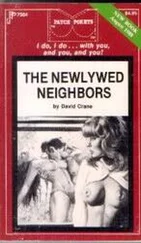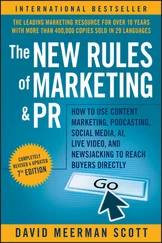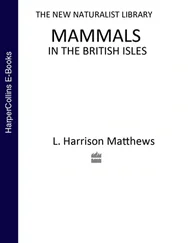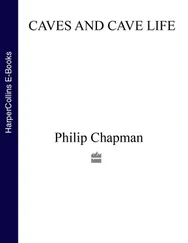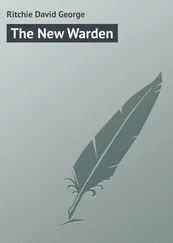1 ...8 9 10 12 13 14 ...39 A departure from the presentation of traditional floras came with the publication in 1866 of Cybele Hibernica 66by David Moore (1807–79) and Alexander Goodman More (1830–95). When living in England, More had worked with H.C. Watson who devised, for Cybele Britannica (1847–59) 67a scheme of 18 ‘provinces’ that were later split into 112 ‘vice-counties’, a first move towards the recording of plant distribution on a quantitative basis. This was the ancestor of the dot distribution maps showing the presence or absence of a species within a grid of 10 km squares, now the internationally accepted grid recording system.
The division of Ireland into 12 ‘districts’ (based mostly on county boundaries) and 37 ‘vice-counties’ was originally proposed by Charles Babington (1808–95), Professor of Botany at Cambridge, in a paper presented to the Dublin University Zoological and Botanical Association in 1859. 68More, quick to see the advantages of such a scheme, adopted the 12 ‘districts’ for Ireland for his compilation of Cybele Hibernica . Plants now had a framework in which they could be recorded; their distribution could be compared region for region over time.
Such was the success of Cybele Hibernica that a supplement followed in 1872 and a second edition of the book in 1898. 69In 1896, shortly before the second edition, Robert Lloyd Praeger (see here) proposed an even more fine-grained recording net of 40 ‘divisions’ or ‘vice-counties’ (each an average 813 km 2) based on the 32 administrative counties that comprised all Ireland. 70The new divisions were used in his monumental Irish Topographical Botany, 71published in 1900, the product of 35 years of active botanising, and have been adopted, subject to minor modifications, as the standard botanical recording units of Ireland. The distribution of plant records in the most recent 1987 Census Catalogue of the Flora of Ireland by Scannell & Synnott are referenced on Praeger’s 40 botanical ‘divisions’. 72
The Rev. Thomas Allin (d?1909) served in several parishes in Ireland – Cork, Galway and Carlow – but apparently ‘botanised’ only in Co. Cork, when he possibly had more available time, and where he gathered his records for the Flowering Plants and Ferns of the County Cork (1883). 73He divided the county into two parts, shown on the book’s coloured frontispiece, which bore no correspondence to the system adopted in Cybele Hibernica. Allin was a careful recorder and listed 700 flowering plants and ferns together with notes on their distribution. In his preface he pays tribute to Isaac Carroll (1828–80), one of the best botanists in the county at the time. The extent of Carroll’s contribution to Allin’s flora is not known but it may have been substantial. The amount of information Allin published was a marked advance on Power’s earlier flora of Cork.
Botanical sub-divisions of Ireland based on vice -counties with the 100 km lines of the National Grid. The sub-zone letters are also given; each sub-zone is a particular 100 km square of the National Grid: B=14, C=24, D=34, F=03, G=13, H=23, J=33, L=02, M=12, N=22, 0=32, Q=01, R=11, S=21, T=31, V=00, W=10, X=20, Y=30. From Scannell & Synnott 72.
From the bubbling crucible of Northern Ireland arose A Flora of the North-east of Ireland (1888) 74by Samuel Alexander Stewart (1826–1910) and Thomas Corry (1860–83). Stewart, an errand boy at 11 and later a trunk maker, played the leading role in founding the Belfast Naturalists’ Field Club in 1863. He was one of a select band of ‘working-men naturalists’ who transcended the social barriers and joined in with middle class hunters of flowers and plants. In 1891 he gave up trunk-making to become Curator of the museum of the Belfast Natural History and Philosophical Society. His colleague Corry was a brilliant and diligent botanist and a poet, who tragically drowned in Lough Gill, Co. Sligo, aged 23. Although the geographic scope of flora of northeast of Ireland is restricted to three counties (Down, Antrim and Derry) the book has been updated, revised and added to numerous times, the most recent edition being 1992.
One of the botanical ‘giants’ of Victorian Ireland was Henry Chichester Hart (1847–1908) who, according to Praeger, was ‘a man of magnificent physique, a daring climber and a tireless worker, and though his pace was usually too fast for exhaustive work, he missed little, and penetrated to places where very few have followed him’. 2Although Hart did not know any Irish he gathered the names and folklore of plants from country people, the results of which remained in manuscript form until 1953 when they were published by M. Traynor as The English Dialect of Donegal. 75,76Born in Dublin, where his father was Vice-Provost of Trinity College, Hart was of a Donegal landed gentry family and started work on Flora of the County Donegal (1898) 77when aged 17, having been inspired by Cybele Hibernica. It was the beginning of a 35 year task which took him on innumerable walks and hikes during which he collected more than half the many hundreds of records that were to enter his book – a remarkable achievement. In 1887 he published a more modest volume on the Flora of Howth. 78Like many before him, Hart was a naturalist of independent means working on a private basis and not affiliated to any state body.
Zoological natural history
Naturalists have historically focused more attention on Irish botany than on zoology, a fact reflected by the discrepancy between the two bodies of literature corresponding to the two areas. Animals are, however, catching up fast, as naturalists and scientists are spurred on by conservation requirements to discover more about endangered and threatened species. New resources for field studies together with advanced technologies are facilitating their task.
Some of the earliest and most original zoological investigations in Ireland were carried out by John Vaughan Thompson (1779–1847) who was born in Berwick-on-Tweed, England, and stationed at Cork in 1816 as Surgeon to the Forces, later Deputy Inspector-General of Hospitals, before going on to Australia in 1835. He was a specialist in planktonic larvae. It had been widely believed at the time that the fundamental difference between crustaceans and insects was that the crustaceans did not pass through different stages or forms in their development from egg to adult. Working almost alone, Thompson discovered that the edible crab did in fact undergo a metamorphosis and developed from a larval form called a zoea which had, until then, been classified as a species unrelated to the crab. Thompson was also responsible for the reclassification of acorn barnacles – the small symmetrical sessile barnacles exposed on rocks at low tide – from the Mollusca to the Crustacea, a major break with the accepted Cuvierian system of the classification of animals in force at the time. Cuvier and other contemporary zoologists believed, on the basis of external similarities, that barnacles were aberrant molluscs. Most of Thompson’s work was privately published in Cork in an obscure series of six memoirs bearing the – similarly obscure – title Zoological Researches, and Illustrations; or, Natural History of Nondescript or Imperfectly Known Animals in a Series of Memoirs , issued between 1828 and 1834. 79
Stages (a-c) in the development of the shore crab. The discovery of the zoea larva (a) by zoologist John Thompson showed that the crab went thorough metamorphosis in its development from egg to adult, sharing this feature with the insects and uniting both as belonging to the Phylum Arthropoda. From C.M. Yonge (1961). The New Naturalist: The Sea Shore. Collins, London.
West Mayo, and especially the Erris peninsula, was the ‘ ultima Thule’ of Ireland where William Hamilton Maxwell (1792–1850) retreated in 1819 from holding the curacy at Clonallon, near Newry, Co. Down, after disgracing himself by riding through his parish naked on horseback following an early morning dip in Carlingford Lough. The wayward curate then became a canon of the Tuam diocese and was appointed to three parishes. He befriended the Marquis of Sligo who gave him the use of his shooting lodge at Ballycroy on the edge of Blacksod Bay where he appears to have spent more time shooting, fishing and writing than administering his parishes. The stories of his adventures and encounters with eagles, otters, seals, grouse and wild geese make Wild Sports of the West, with Legendary Tales and Local Sketches (1832) a vivid read. 80It is an obligatory text, written along semi-fictional lines with many ‘ripping’ yarns which tell a lot about western Ireland, its wildlife and local lore during the early nineteenth century. His capability as a lively raconteur and his easy social manner gave him access to and accommodation with the British garrison in Castlebar, Co. Mayo, whenever he wanted it: ‘Maxwell introduced the officers to capital shooting, dined at their mess; and while draining their decanters drained their memories of those stirring recollections which he turned to account in Stories of Waterloo. ’ 81In between his fishing, hunting, drinking and socialising, Maxwell mustered enough energy to write 20 books. His ambition in Wild Sports was to ‘record the wild features and wilder associations of that romantic and untouched country’ – a goal he certainly honoured. Amongst his numerous observations, he recorded some of the last indigenous red deer of Mayo which were persecuted almost to extinction during his time with the aid of muskets abandoned by the French in 1798. He lost his ‘living’ of Balla in 1844 through absenteeism which, combined with a self-indulgent lifestyle and increasing debts, forced him into exile in Scotland where, as an alcoholic, he died of broken health aged 58.
Читать дальше


